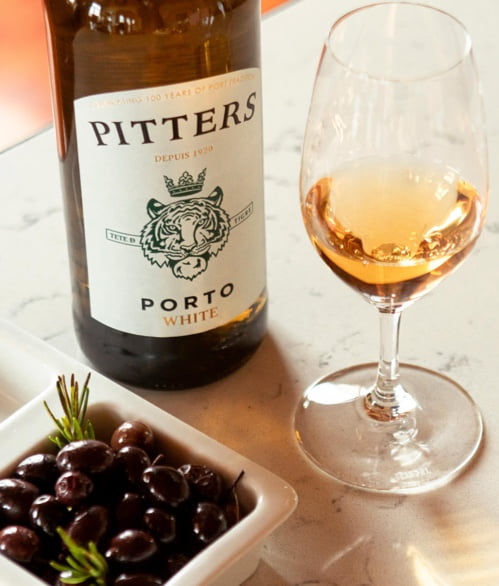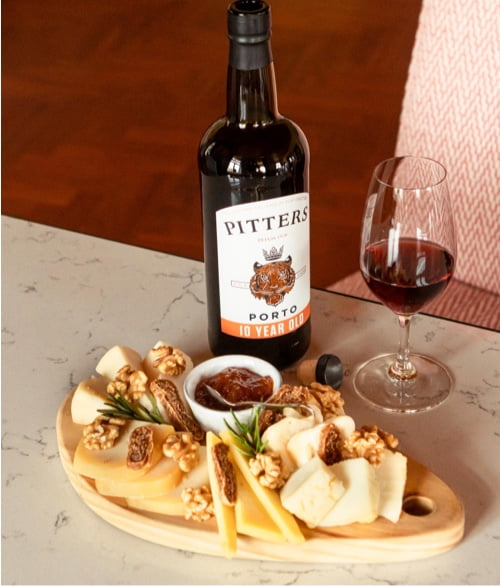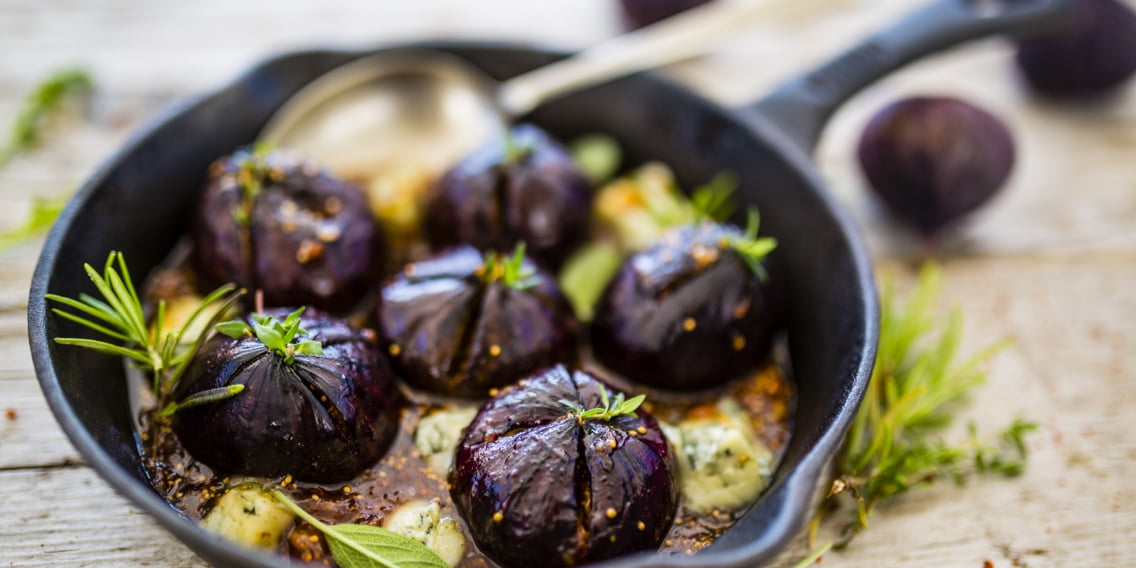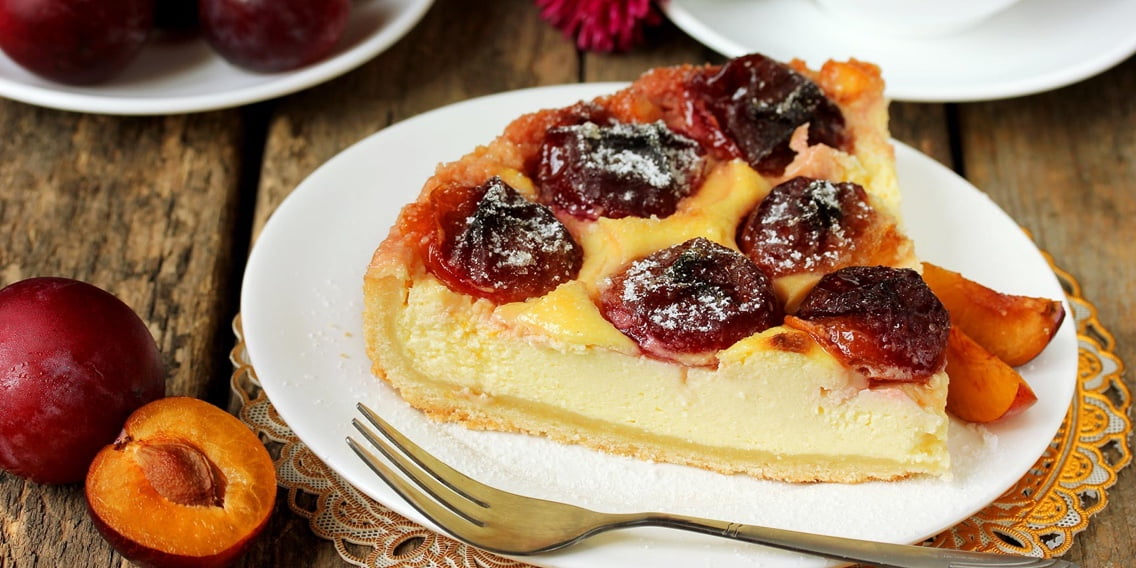
How is Port made
Port is one of the world’s great classic wines, named after the coastal city of Porto, where the wine is aged. The grapes are grown in the mountainous reaches of the Douro Valley, in northeastern Portugal. In this spectacular area, classified as a World Heritage site, the vineyards are planted on narrow walled terraces clinging to the steep hillsides.
Port is a fortified wine made from the fermenting grape juice of several indigenous varieties of grapes, each possessing a different characteristic of taste and aroma.
Port wines are fortified with grape spirit to stop the fermentation, preserving the natural sweetness of the grapes, but raising the alcoholic strength to almost double the abv of a table wine, at 20 degrees of alcohol. This gives Port its unique smoothness and richness. It also means that Port can be aged in oak casks or vats for longer than most other wines.
After harvest, the wines are stored in large oak casks, resting over the winter in the winery in the Douro Valley. In the spring of the following year they are brought down to the Port cellars in Vila Nova de Gaia, opposite the city of Porto, to age until they are ready for bottling. Different methods and periods of ageing produce Ports of different styles, with their own distinctive taste and character.
Pairing with food
Pitters White Port
Pitters White Port is traditionally served chilled as an aperitif.
You can also drink it as a refreshing cocktail in a long drink glass with ice, tonic water and a mint leaf.
Accompanied by olives, salted almonds or pine nuts, it is the perfect long drink. It can also be paired with hard and crumbly cheeses as Wensleydale, Cheshire or Caerphily.
Pitters Tawny Port
PittersTawny Port makes a delicious dessert wine. It combines particularly well with flavours of dried fruit and almond based desserts. Perfect to accompany a crème brulée, a tira misú or an apple pie.
It can also be enjoyed as an accompaniment for firm, mature and intense cheeses, as Comté, Gouda or Pecorino. It is excellent at the end of the meal, served on its own or with a plate of walnuts or roasted almonds.
Pitters Ruby Port
Pitters Ruby Port, with its firm tannins and concentrated fruitiness, is the style most suited for the classic Port and cheese or Port and chocolate combinations. It is particularly good with full - flavoured soft cheeses as Farmhouse Cheddar, Brie, Camembert or Pont l'Evèque.
It is also delicious with bitter chocolate and chocolate desserts, as a chocolate gateau or mousse, berry fruit flavoured desserts and dark chocolate truffles.
Pitters 10 Year Old Tawny
Pitters10 Year Old Tawny, an excellent dessert wine, served at the end of the meal, with walnuts or toasted almonds. Or for somebody with a slightly sweeter tooth try it with a crème brûlée, a tiramisú or an apple pie.
We suggest you try it with firm, mature and intense cheeses, as Comté, Gouda or Pecorino.
Cooking with Port Recipes
01. Baked Figs in Port with caramelised almonds
Ingredients
For the sugar syrup:
50g/1¾oz caster sugar
100ml/3½fl oz water
For the figs:
8 ripe purple figs
4 tbsp Pitters Ruby Port
50g/1¾oz unsalted butter
1 vanilla pod, split in half
freshly ground black pepper
2 tsp honey
For the caramelised almonds:
110g/4oz flaked almonds
Icing sugar, for dusting
Crème fraîche, to serve
Preparation method
For the sugar syrup, place the caster sugar and water in a saucepan and stir over a low heat until thesugar has dissolved. Then raise the heat under the pan and bring the syrup to a boil. Boil for one minute,then remove the panfrom the heat.
For the figs, preheat the oven to 240C/465F/Gas 9. Prick the figs all over using a fork.
Gently heat the port in a casserole dish and allow to bubble until it has reduced by half. Add the butter,six tablespoons of the sugar syrup, the split vanilla pod and a generous amount of black pepper. Bring tothe boil, then gently add the figs and the honey.
Transfer to the oven for 5-6 minutes, basting the figs occasionally with the liquid.
Meanwhile, for the caramelisedalmonds, sprinkle the flaked almonds onto a non-stick baking tray anddust generously with icing sugar. Bake in the oven for a few minutes, until golden-brown.
To serve, arrange the figs on serving plates and drizzle the poaching liquor over them. Scatterthecaramelised almonds over them and decorate with the vanilla pods if you like. Serve with a dollop of crème fraîche

02. Plum and Port Cheesecake
Ingredients
200g/7oz full fat cream cheese
284ml/9½fl oz double cream
10 digestive biscuits
40g/1½oz butter
6 large plums
350ml/12fl oz Pitters Port (tawny or ruby)
50g/2oz caster sugar
Preparation method
Melt the butter slowly over a low heat and meanwhile smash the biscuits into small crumbs with a rolling pin in a food bag, or in a food processor.
Add the biscuit crumbs to the butter and stir until well combined. Now press into the base of four rings which are best placed on a non-stick baking tray. Pop the tray in the fridge and leave for at least 30 minutes to allow the base to set.
Place the plums in a saucepan so that they aren t sitting on top of one another and then pour in the port. Cover, and bring slowly to the boil, then simmer for about 15 minutes. Turn the plums over during the cooking to ensure they are poached all over. Once soft, remove the plums from the port and leave to one side to cool.
Pass the plums through a sieve to get rid of the stones and skin and then leave to one side. When using the purée later for garnish, check if it might need a little sugar added to it – it really depends on the type of plum you have used.
Meanwhile, whip the double cream in a food processor until it is beginning to become nice and firm. Careful not to let it go over the top though. Now add 4 tbsp of the plum purée, the cream cheese and the caster sugar. (the amount of caster sugar used is not set in stone – it depends on the type of plum used and to your taste). Whiz all of this up together and you should get a firm and creamy mixture. If the mixture is not looking firm, add a little more whipped cream.
Spoon the mixture carefully into the ring moulds and smooth over the top with a flat knife. Leave in the fridge to set for at least 1½ hours, longer if you can.
To make the sauce, reduce the Port by about half, until it becomes slightly syrupy. Check if it needs sugar added. (If you were making a whole large cheesecake you could add the remaining purée to the Port reduction for a fruitier sauce, to compensate for missing out Step 8 below on the individual cheesecakes).
Once ready to serve, remove from the mould and set on a serving plate. With a teaspoon, scoop out a little well in the centre of the cheesecake, and place some of the leftover plum purée in the space left. Pour some of the Port reduction around the edge of the plate and serve.







